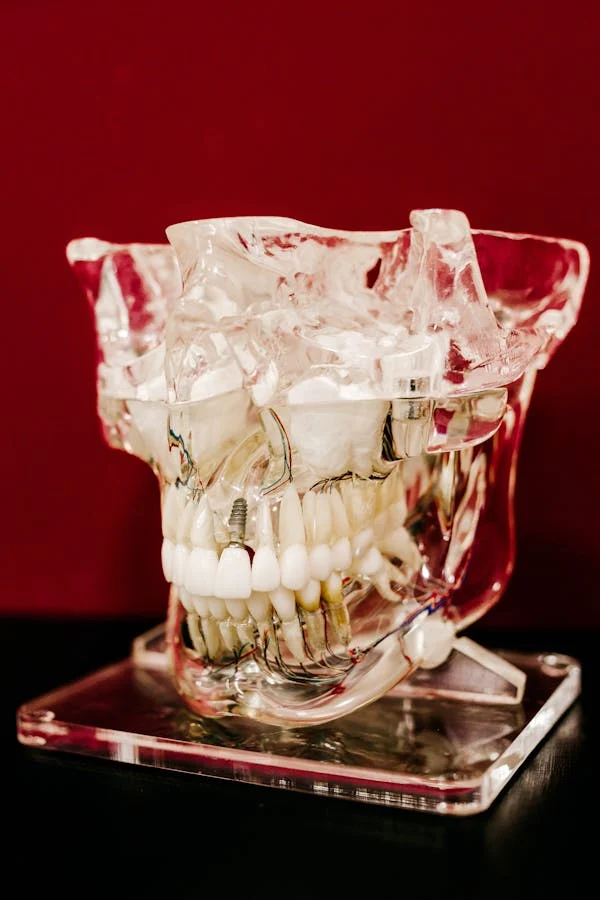5 Common Myths About Dental Implants – Debunked!

5 Common Myths About Dental Implants – Debunked!
The implants are a relatively young, very actively developing branch of dentistry, the main task of which is the gap, the restoration of lost functions in the teeth, and the aesthetics of the smile. Nevertheless, despite the growing popularity of this brand-new technique in the dental area, there are still lots of myths and misconceptions in people’s minds. These misunderstandings can lead patients away from this clearly useful treatment and can introduce stress that is unneeded and could deter many people who might find the treatment helpful.
In this part, we tend to bring five facts and myths about dental implants in order to create an opinion-maker depending on your dental requirements.
1: Dental Implants Being Painful
Truth: Perhaps the most common concern dentures hold about dental implants is the perception of feeling pain during the process. This has, however, slightly changed with improved dental technology and generally the ways and means of giving anesthesia to patients that increase comfort.
- Anesthesia Options: The majority of dental implant surgeries are carried out under local anesthetic, which makes the patient unaware of the proceedings around the implant area. In order to deal with anxiety and for those who can barely take pain, ways or means of putting the patient to sleep can be arranged for the duration of the whole surgery.
- Post-Operative Discomfort: There are normal aches and pains after the operation, which are usually mild and can be eradicated by aspirin or any other prescribed painkillers. According to the patients, the post-operation discomfort is not as bad as expected. Thus, patients are able to get back to their routine promptly.
2: Myths About Dental Implants Are Only for Older Adults
Truth: Dental implants are not for the elderly as common people may think. It means they are physically available for all the adult population regardless of age as long as they meet definite health requirements.
- Age Considerations: The principle prerequisite of the dental implant is that there is a fully developed jawbone, which, in most cases, is achieved by the age of 18 years to early adulthood. Somebody with healthy gums and enough bone mass can be a good candidate for dental implants, no matter how old he is.
- Improving Quality of Life: Younger people also require a dental implant for various reasons, including an accident, a sports injury, or any birth anomaly. Dental implants can equally improve /functional and esthetic dental needs/ to the extent that the patient can chew comfortably, speak clearly, and smile without any apprehension.
3: Myths About Dental Implants Require Extensive Maintenance
Truth: Another major benefit of dental implantation is based on the fact that they call for little maintenance compared to most other denture alternatives.
- Oral Hygiene Practices: Like natural teeth, oral hygiene of patients with dental implants should include twice daily brushing, daily flossing, and regular check-ups with the physician. The combination of this routine aids in keeping the implants a lasting solution.
- Longevity: Proper dental implant care can lead to their extended lasting capacity for a lifetime; therefore, it is more cost-effective than other ways, which may need much more frequent replacements or realignments.
4: Myths About Dental Implants Are Not Safe
Truth: Dental implants, therefore, fall among the safest and most effective treatment modalities for tooth replacement if procured from a competent dentist.
- Success Rates: Studies show that dental implants boast a success rate of well over 95% and are, therefore, a very safe way to replace lost teeth. This high success rate is attributed to improved technologies as far as surgeries are concerned, as well as the materials used for implantation.
- Biocompatibility: The type of titanium used in dental implants is bio-compatible; it easily fuses with the bone without eliciting reactions in the body. This process of implant stabilization is formalized as osseointegration, which is a critical step in leaving no trace behind.
5: Getting Dental Implants Takes Too Long
Truth: Of course, the overall regimen of receiving dental implants may often span several months as a result of healing as well as integration intervals; however, numerous recipients express that the advantages outweigh any necessity to wait.
- Phased Approach: The key steps include pre-operative evaluation, surgery, implant installation, integration, abutment installation, and prosthesis placement. In turn, each of the phases formulates the subsequent phases’ plans and, therefore, is carried out as systematically as possible to achieve the best outcome.
- Temporary Solutions: Stewart R Temporary prosthetic appliances for treating patients during the healing period include crowns or dentures that can be provided to patients before the production of a permanent prosthesis. This is important to avoid gaps left in the mouth while the patient undergoes recovery.
Conclusion
Dental implants represent a durable and aesthetically pleasing solution for replacing missing teeth. Unfortunately, misconceptions surrounding their safety, effectiveness, and maintenance can deter individuals from pursuing this beneficial treatment. By debunking these common myths about dental implants, we hope to empower potential patients with accurate information that can aid in their decision-making process.
If you are considering dental implants or have further questions about the procedure, don’t hesitate to reach out to our office at Ramlaoui DDS. Our team is dedicated to providing personalized care and guidance tailored to your unique needs. Your journey toward a healthier smile starts with understanding your options!

